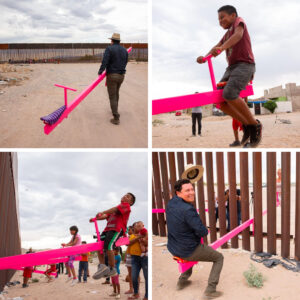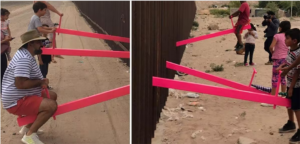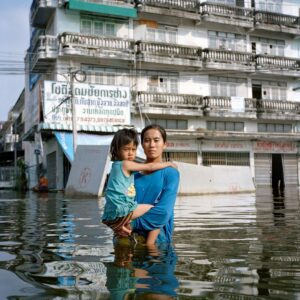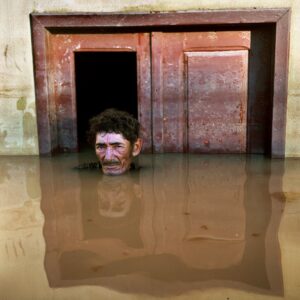Over the past two weeks, I shared some thoughts about Art Based Research (ABR) methods with students and colleagues. I thought I would also write my reflection here.
Personally, I have always been driven toward ABR for my need to think through making and my passion for the arts. But aside from my strictly personal interest, I also believe it is a good time to discuss ABR within the context of STEM disciplines.
Research about STEAM – supporting approaches that align studies of the Arts alongside STEM subjects in Higher Education – has been extremely lively in the last few years and has seen the development of some exciting projects lately. For example, the ‘STEAM INC’ project brings together six UK and European higher education partners currently delivering innovative STEAM approaches, with Ars Electronica, a world-renowned platform for art, technology and society based in Austria. In this project, which will be completed in August 2022, STEAM educational frameworks are being tested (https://www.arts.ac.uk/research/current-research-and-projects/steam). In a similar direction is moving, among others, the STEAM research group at the University of Westminster (https://www.westminster.ac.uk/research/groups-and-centres/steam-research-group)
Art-Based Research (ABR) methods can be defined as a set of methodological tools used by researchers across the disciplines during any or all the phases of research, including data generation, analysis, interpretation, and representation.
These “tools adapt the tenets of the creative arts in order to address research questions in holistic and engaged ways in which theory and practice are intertwined” (Leavy 2020)
Art-Based practices draw on different art forms, from literary writing, music, dance, performance to the visual arts, film and other mediums.
They include but are not limited to:
Short stories, novels, experimental writing forms, graphic novels, comics, poems
Collages, paintings, drawings, sculpture, installation, video-art
Quilts, needlework (especially in indigenous research)
Performance script, theatrical performances, dances
Films, songs and musical scores.
What all the ABR methods share is:
– The power of the arts to connect us with people and reach people – either as participants, co-researchers or audience – people that would otherwise remain in the darkness and wouldn’t have opportunities to be involved in the research process or access research outcomes.
– The possibility of opening up new ways of seeing and experiencing, and, as a result, new potential perspectives on the research subjects.
– The ability to collect and tell stories. I agree with the theory that “the literary mind is the fundamental mind” (Turner 1996) and that most of our experiences, knowledge and thinking are organised as stories. Hence, I also believe that stories can help us make sense of one another and the places around us. Stories can help us interact with both people and places in a meaningful way.
For their being collaborative, inclusive, inter-disciplinary, engaging, and for their ability to promote a horizontal relationship between
researchers, participants and audience and bringing ‘others’ into the research process, ABR methods can democratise meaning-making, promote the advancement of public scholarship and the circulation of knowledge that impacts people.
Finley writes that: “For its being publicly accessible, collaborative, provocative and evocative, ABR is “uniquely positioned as a methodology for radical, ethical, and revolutionary research that is futuristic, socially responsible, and useful in addressing social inequities” (Finley 2008: 71)
And there are plenty of research projects in which the evocative and provocative power of the arts has been used as a means of creating critical awareness or raising consciousness.
I have chosen two examples here that, for me, are particularly strong in connecting audiences with social and climate justice issues.
The first example is Teeter Totter Wall by architecture studio Rael San Fratello and Colectivo Chopeke. The project allowed children on both sides of the US-Mexico border wall to play together using pink seesaws.


Rael San Fratello, ‘Teeter-Totter Wall’. Images: Instagram @rrael
The work results from ten-year research on borders exploring trade and labour relationships between US and Mexico. The final work aimed to demonstrate that actions taking place on one side of the border have direct consequences on the other, viewing the boundary as a “site of severance”. (https://www.rael-sanfratello.com/made/teetertotter-wall)
The installation only lasted 30 minutes but had a vast mediatic impact. This project was awarded the Design of the Year Prize in 2020, ironically on the last day of Trump’s presidency. The Design Museum director commented that the idea is “[not] just something that felt symbolically important, it talked about the possibility of things; that all kinds of things are possible when people come together with great ideas and determination” (Design of the Year prize 2020)
Another excellent example of ‘creative activism’ is Drowning World by Gideon Mendel. Here, “photography is used to explore the effects of climate change in an intimate way, taking audiences beyond faceless statistics and into the individual experiences of its victims” (https://gideonmendel.com/drowning-world-introduction/).


Gideon Mendel, “Drowing World”. Images Credits: image credits: http://gideonmendel.com/submerged-portraits/
The two projects above – like many others – are excellent examples of how art-based practices can be employed as a means to raise awareness by evoking empathetic responses. And, about empathy, I want to conclude with this quote, again from Patricia Leavy’s book Method meets Art: “While ABR can raise awareness and foster critical consciousness by presenting alternative, emotional and evocative, attention-grabbing and/or resistive stories, images, and performances, it is the cultivation of empathy that is perhaps one of the greatest strengths of ABR with regard to these goals”.
EMPATHY, such an essential word.
References:
Finley, S. (2008) Arts Based Research. In J.G. Knowles & A.L. Cole (Eds), Handbook of the Arts in Qiualitative Research: Perspective, Methodologies, Examples, and Issues (pp 71-81). Thousands Oaks, CA: Sage.
Leavy, P. (2020) Method Meets Art. New York/London: The Guildford Press.
Turner, M. (1996) The Literary Mind: The Origins of Thought and Language. New York: Oxford University Press.

Leave a Reply